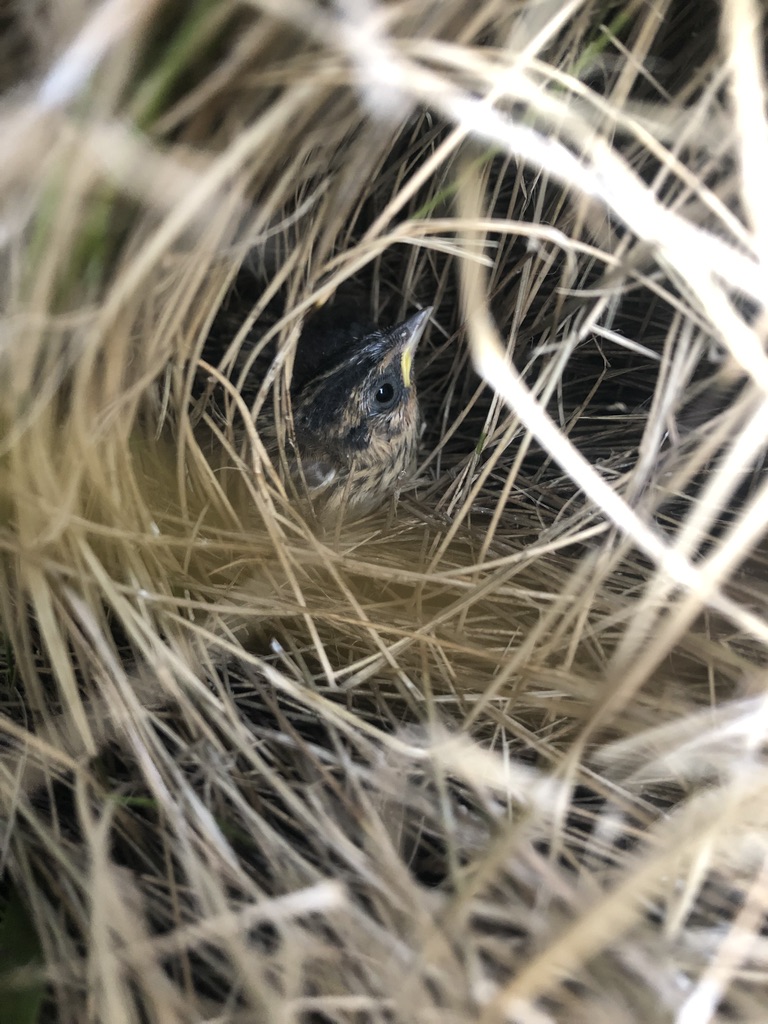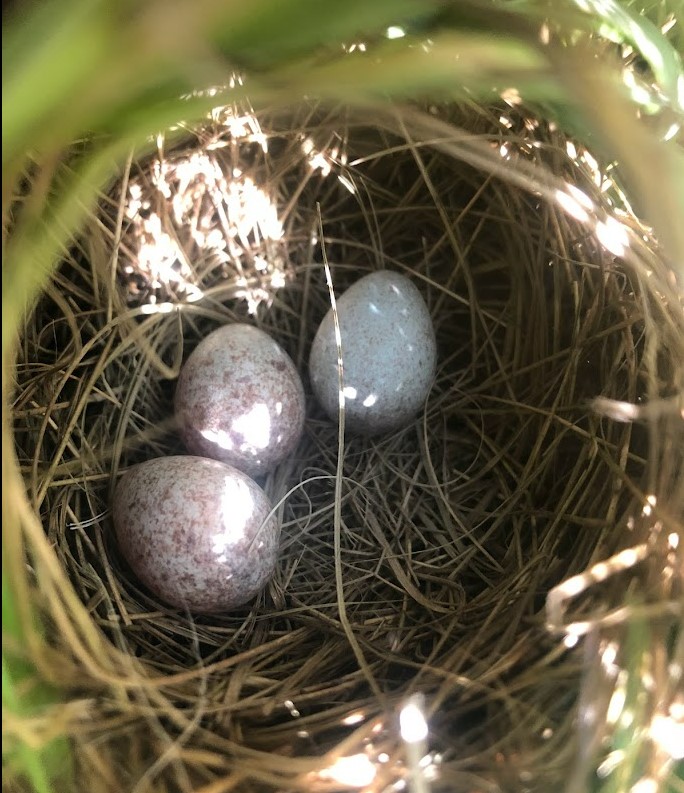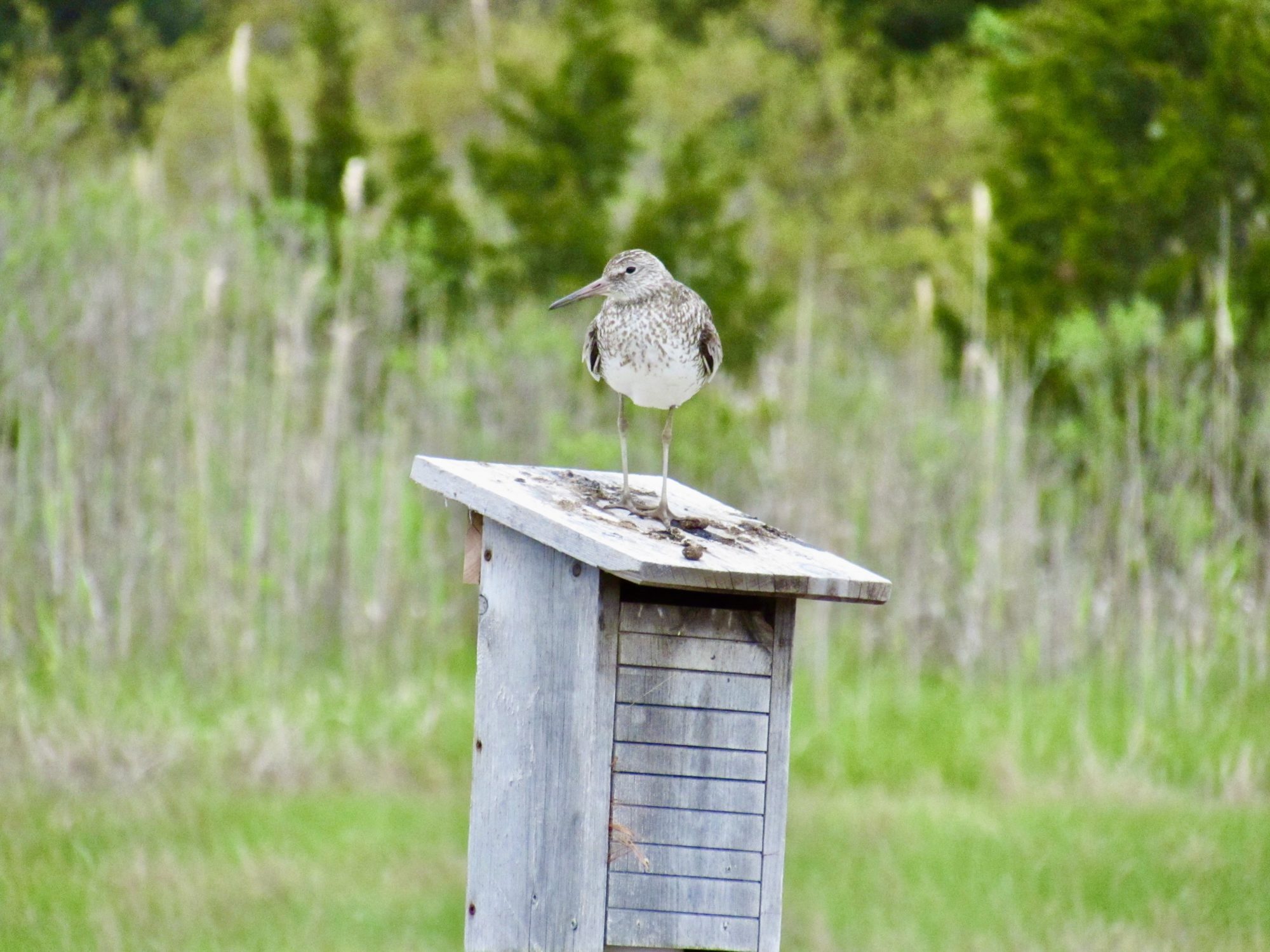Sound Stories
The blog of the Long Island Sound Study
The blog of the Long Island Sound Study

Hi. My name is Sam Apgar and I am a PhD candidate in the Ecology and Evolutionary Biology Department at the University of Connecticut. I am a member of Dr. Chris Elphick’s lab, and I study the behavioral, physiological, and demographic traits of birds breeding in tidal marshes. In this blog post, I describe how I use a video camera to understand tidal marsh bird responses to their nests flooding with seawater at two Connecticut coastal conservation areas.

I’m walking through the marsh on a night at the end of July or rather, trudging through it. The seawater is a few inches above the marsh surface. When I approach a ditch, man-made narrow and straight creeks that are found in 94 percent of New England marshes1, I wade across the overly filled waterway. Normally I’m able to jump over these ditches, but on a night like this, I all but swim across in my chest-high waders. I keep walking in the darkness. The only light comes from my head lamp and hand flashlight. I’m out on a new moon, the time of the month when there is a complete absence of lunar light.
During the new and full moon phases, the moon and sun are in line with the earth, causing a stronger gravitational pull on the oceans. This results in the highest high tides of the month. Suddenly I can see two seaside sparrows, one of two species of marsh nesting sparrows in Connecticut, landing on the water and then flying upward again. This is a strange occurrence- the marsh is so flooded that I’ve seen no other birds. The two sparrows, likely a breeding pair, continue to fly up and down as I visually scan the area. Then I see it—two eggs floating on the surface of the water. This pair has a nest nearby and their eggs floated away before they could hatch.


About a million years ago, birds started moving into Northeastern tidal marshes for breeding. Tidal marshes are a hard place to live and reproduce, because the tide causes the marsh surface to flood around the new and full moons. Marshes are predominantly comprised of grasses and sedges, so bird nests can only be placed in vegetation close to the ground. In addition to the risk that flooding poses to reproduction, tidal water is saline. Salt is a challenging molecule for most terrestrial organisms to deal with. But living and breeding in tidal marshes has benefits too. Due to the harsh nature of marshes, there’s a lot of space and resources for any organism capable of living there. Additionally, marshes are incredibly productive ecosystems that tend to have a lot of food, at least from the perspective of a bird. These are likely the reasons why select bird species moved into and evolved in tidal marshes over the past hundreds of thousands of years.
I study four of these species—the saltmarsh sparrow, seaside sparrow, willet, and clapper rail. These species all nest in Long Island Sound marshes. In the adjacent time-lapse video, you will see the tide come into a saltmarsh sparrow nest and retreat within 65 minutes. This type of flooding is exceedingly normal for a marsh bird nest. Saltmarsh sparrow nests flood for periods of 98 minutes on average and despite this, many fledge chicks2. Despite how jarring the imagery is, saltmarsh sparrows and the other species I study have been successfully navigating the challenges of living and reproducing in tidal marshes for a very long time. As long as their eggs don’t move out of the nest during flooding and chicks don’t drown, the nest can continue on to fledging, the time when chicks leave the nest. Unfortunately, these birds have now run into a problem: anthropogenic sea level rise.
Through multiyear surveys comparing current population sizes to population sizes from the 1990s, researchers from the Saltmarsh Habitat and Avian Research Program (https://www.tidalmarshbirds.org), including my advisor, Dr. Chris Elphick, have found that two of the four species listed above are declining. The saltmarsh sparrow is declining at a rate of 9 percent a year and the clapper rail is declining at a rate of 4.6 percent a year3. For the saltmarsh sparrow specifically, sea level rise is causing the highest high tides of the month to flood nests before chicks can fledge, leading to an expected extinction as early as 20354. As for seaside sparrows and willets, it’s not known why their populations are remaining stable while the populations of their marsh bird peers are declining.
One of the chapters of my dissertation examines how tidal marsh nesting birds behave when their nests flood with seawater during exceptionally high tides. To accomplish this, I placed infrared-augmented video cameras outside of nests during high tide events at night across three summers at Hammonasset Beach State Park and along the East River in Madison, CT. A team of undergraduate students at the University of Connecticut and I spent years reviewing the nearly 400 hours of video footage I obtained to quantify the length of time adults are present at nests or chicks climb up and out of nests to survive high tides. We have found that saltmarsh sparrrow, seaside sparrow, willet, and clapper rail adults don’t spend a lot of time at nests that are flooded. We found that older saltmarsh sparrow chicks climb up vegetation to avoid drowning, but they do so mostly on lower high tides. But, most importantly, whether a nest survives a nest flooding event (eggs stay in the nest and/or chicks don’t drown) is dictated by the tide height and not anything the adults do behaviorally. For saltmarsh sparrow nests, the presence of chicks does not change this pattern. My research suggests that tidal marsh birds at present likely don’t have the behavioral capacity to handle future increases in nest flooding due to ongoing sea level rise5.
The problem, ultimately, isn’t that nest flooding happens. The problem is how often it’s happening. Saltmarsh sparrows are adapted to tidal marsh nesting by laying eggs, incubating them, and raising nestlings within a roughly 23-day window that historically fit in between the highest high tides of the month, which in the current cycle is between the full moons. In the adjacent video, you can see how tight this window of lower tides is for saltmarsh sparrows to fit in all the necessary steps for successful reproduction. As the sea rises, the height of tides increases on each end of that window, making successful reproduction impossible. Sea level rise is simply causing the tides to be too high, too quickly, and nests are getting too wet, too often for meaningful adaptation to occur. During my graduate school career, I have found 241 saltmarsh sparrow nests at my two study sites (see below). Of these nests, only 68 have fledged at least one chick. During the 2021 field season, the numbers were much worse. Just four nests fledged chicks out of 41 nests found, with five having unknown fates.


The saltmarsh sparrow is emblematic of climate change and specifically sea level rise. Just like the saltmarsh sparrow, we’re in trouble too. Sea level rise doesn’t only threaten their habitat, it threatens ours. Nearly 30 percent of United States residents live on coast lines, including more than three million people on the coast of Long Island Sound in Connecticut and New York. If we want to save the saltmarsh sparrow and ourselves, we need to slow our global emissions rate and ultimately reverse it. But that’s not the only solution, the second is habitat restoration. For saltmarsh sparrows and humans alike, millions of dollars are being directed annually into adding sediment to marshes, a process called thin-layer deposition, to increase the height of the marsh platform. Increasing the height of saltmarshes will hopefully keep saltmarsh sparrow nests dry during regular and storm-driven flooding, while keeping our homes dry too. Let’s continue to remember that as humans we are not completely divorced from the factors that are causing coastal bird populations to decline. We’re also at risk, which gives us all the more reason to preserve the land we share with them.









Handling of all wildlife of the photos in this blog post were done with approval through appropriate, federal and state permits and site permissions.
 Sam at one of her marsh study sites at Hammonasset Beach State Park in Madison, CT. Credit: Mackenzie Watkins.
Sam at one of her marsh study sites at Hammonasset Beach State Park in Madison, CT. Credit: Mackenzie Watkins.
Sam’s research was funded with support from:
Notifications